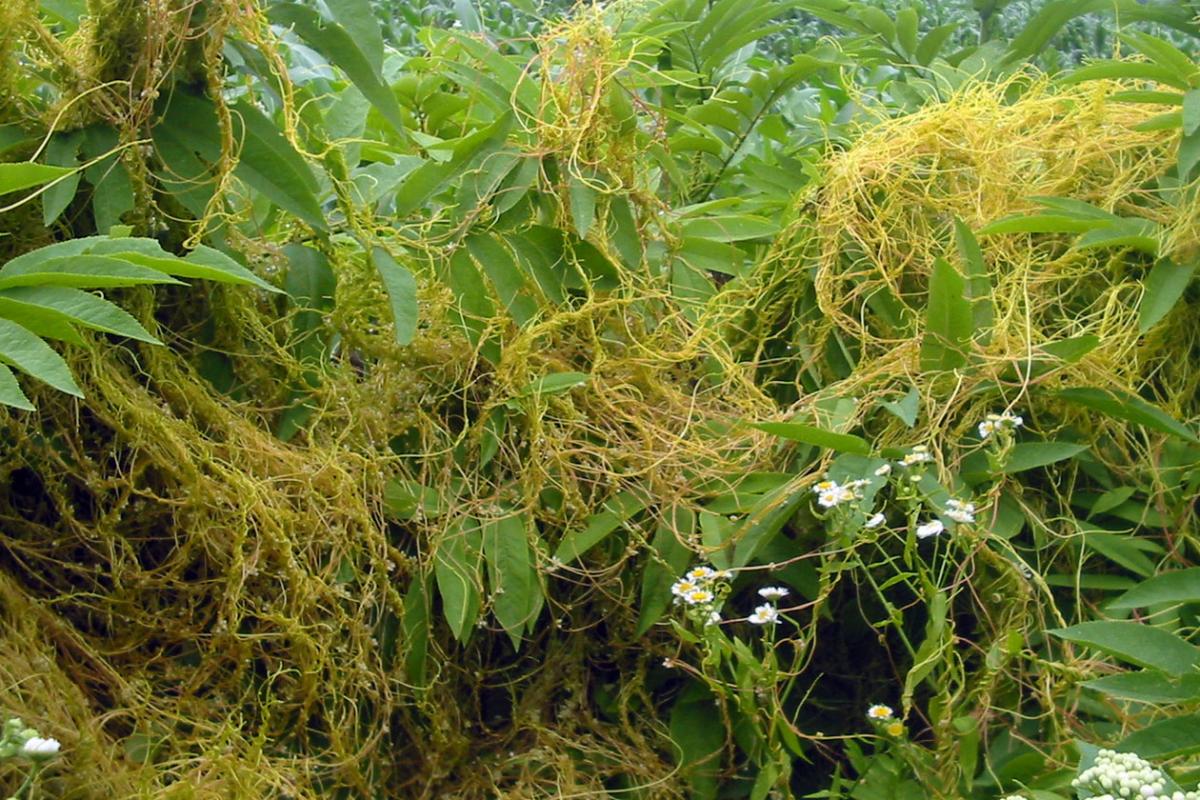D: Yaël, why do we have to talk about parasites again? They’re so disgusting.
Y: Parasites are an important part of the ecology, Don, and they are really interesting. In 2020 an international team of researchers made an important discovery about a parasite called a dodder.
D: What’s a dodder?
Y: Dodders are a group of over a hundred parasitic plant species, found through much of the world. They don’t have roots or leaves of their own and live by parasitizing many kinds of host plants. A dodder covers its host with a tangled web of stems. The stems infiltrate their host with tiny tubes that siphon off water and nutrients. The dodder flowers at the same time as its host and produces seeds to begin the cycle again.
D: Wait a minute. Most flowering plants use their leaves to sense when environmental conditions are right to flower. If the dodder doesn’t have any leaves, how could it know when to flower?
Y: Don, that’s what the research team discovered. The dodder eavesdrops on the chemical signals of its host. When a flowering plant’s leaves detect appropriate conditions, they trigger a gene that produces a signaling protein that spreads through the plant and causes flowering. By labeling the signaling protein with a florescent tag, the researchers showed that it also spreads from the host to the dodder. When the researchers blocked the function of the host gene, the dodder’s flowering was disrupted along with the host. This is the first time a plant parasite has been shown to use its host’s biochemical signals.
D: Okay, I admit that parasites are interesting, but I still think they’re disgusting.









